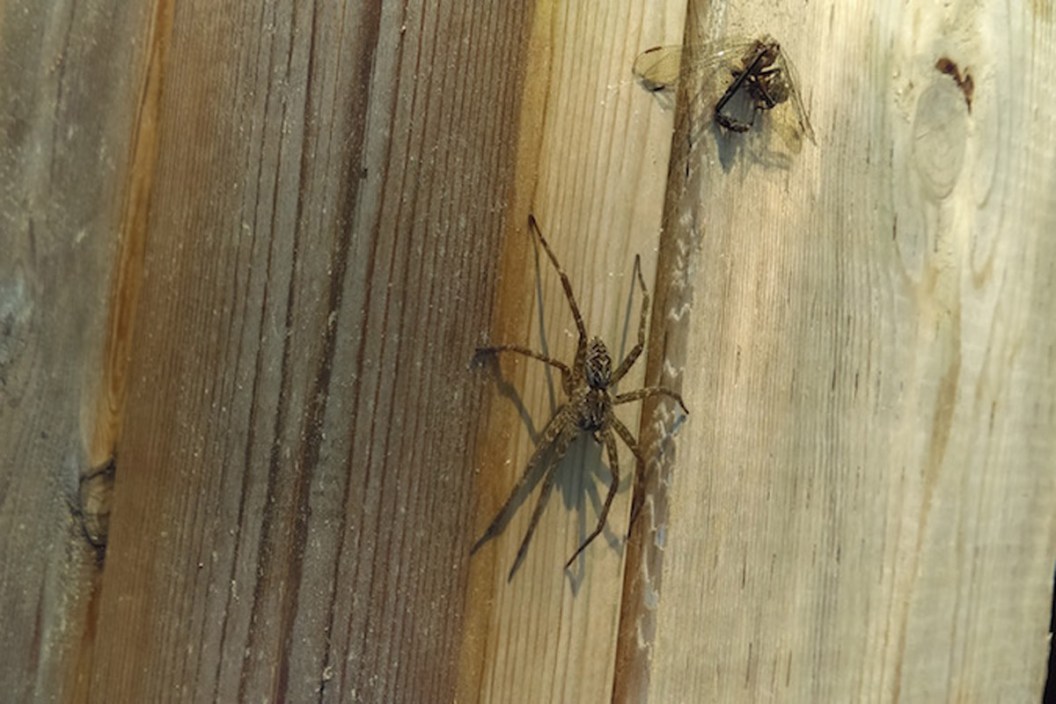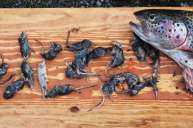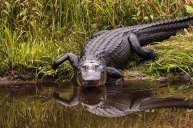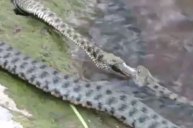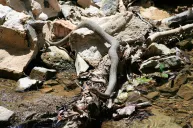There's a lot more to those little hunters than you may have thought.
Spiders recognized in the genus Dolomedes are called fishing spiders because most live near water and have been reported to catch small fish and aquatic insects from the areas they use as their home.
We need to be able to distinguish these spiders from their cousin, the wolf spider, which is very comparable in size and looks, but is a mostly terrestrial arachnid. Fishing spiders prefer to be in and around the water.
According to the N.C. State Extension, fishing spiders feed primarily upon unfortunate insects that cross paths with them, but can also catch and consume small fish and tadpoles. In fact, they can even dive and remain underwater for short periods of time.
Both, however, can hunt at an incredibly efficient rate.
Life Cycle
Fishing spiders are a part of the family of nursery web spiders. Females can carry a large egg sac in their jaws, but when the eggs are ready to hatch, will tie leaves or other debris together and suspend it in a "nursery" of folded plant material.
These dark fishing spiders are large, brown and hairy arthropods that do not feed on plants, and their venom isn't dangerously toxic to humans. However, it's always worth avoiding a bite and experiencing any kind of allergic reaction.
Prey
These hairy arachnids may have the name of fishing spider, but it's not always a fish that they catch and eat. Maybe the most common prey to these voracious spiders is the inimitable water strider. These spiders can eat damselflies and even the occasional dragonfly if it's not too big.
If that insect-ridden diet didn't gross you out enough, it's worth noting that another one of their favorite things to feed on is mosquito larvae.
Oh yes, and both male and female fishing spiders will consume their other fishing spider brethren, although females being much larger are more likely to be the diner than the meal.
The Hunter
Fishing spiders, sometimes lightly called dock spiders, have a large leg span of up to 3 inches. It's their rear legs that cling to the aquatic vegetation along lake and stream edges, while their front legs rest on the surface tension of the water's surface, waiting for the vibrations that signal a meal.
Few creatures are as adept and qualified to hunt right out on the water's surface, but the fishing spider might be one of the best. Fishing spiders are purported to be among the hairiest of the spiders that live in North America, too, and their hair is uniquely adapted to shed the water.
They can dive for up to 30 minutes to avoid predators or to actively hunt.
Dispersal
Dolomedes tenebrosus, which ranges from southern Canada down to Texas and from North Dakota to virtually every state east of the Mississippi River. They certainly hide out in the leaf litter or under some hidden dock or other structure for the winter in may areas.
They are better suited to live and hunt over calmer bodies of water, but these vivacious hunters do just fine living in and around moving water. They prefer rocky outcroppings near the water to hide and hunt from, while also using any close vegetation to do the same.
Fish, tadpoles or insects that disturb the surface are instantly attacked.
Size
The fishing spider and some forms of the wolf spider, particularly the Carolina wolf spider, are among the largest spider species on the continent. While wolf spiders and their spiderlings inhabit more of the wooded areas, their large size gives them away.
Even though they are shy and mostly run from human activity, fishing Spiders are fast and will not hesitate to bite.
Products featured on Wide Open Spaces are independently selected by our editors. However, when you buy something through our links, we may earn a commission.
Looking for a little more or even hot lunch for your hunting blind? Follow my webpage, or on Facebook and YouTube.
NEXT: ALL THE SNAKES IN NORTH CAROLINA
